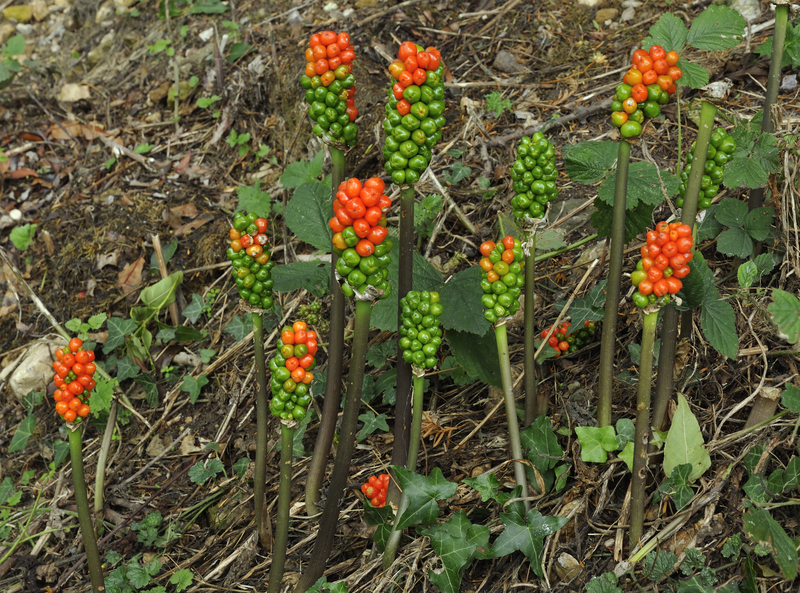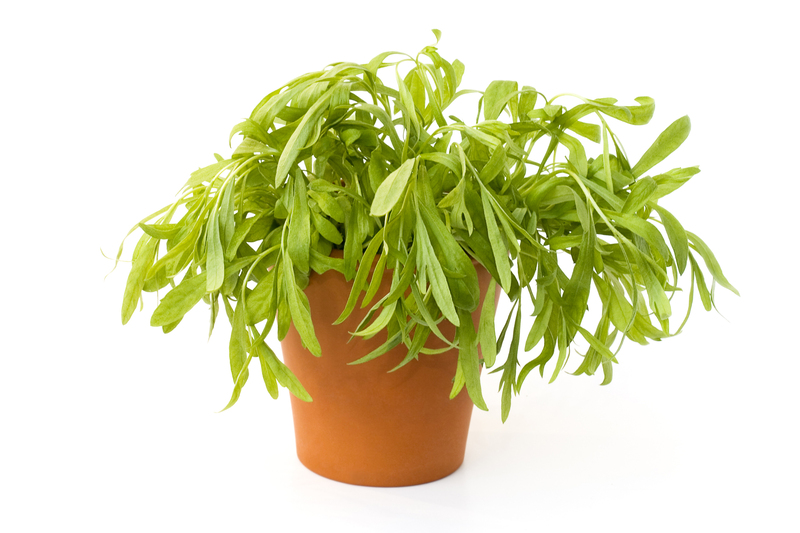Turning Leftovers into Nutrient-Packed Earth
Posted on 28/05/2025
Turning Leftovers into Nutrient-Packed Earth: The Ultimate Guide to Composting
Are you startled by how much food waste ends up in your kitchen trash every week? Transforming leftovers into nutrient-packed earth is an eco-friendly solution that not only diverts waste from landfills but also fuels your garden with natural fertilizer, improving soil health and boosting plant growth. In this comprehensive article, we'll take a deep dive into creative and sustainable ways to turn food scraps into nutrient-rich compost, empowering you to become an earth-saving expert from the comfort of your own backyard.
Why Should You Compost?
- Reduces landfill waste: Food scraps comprise a significant portion of municipal solid waste, most of which ends up producing methane--a potent greenhouse gas--as it breaks down anaerobically in landfills.
- Enriches your soil: Nutrient-packed compost boosts the organic content and fertility of garden soil, supporting vibrant, healthy plants.
- Lowers your carbon footprint: By recycling leftovers and organic yard debris through composting, you help combat climate change by limiting methane emissions.
- Saves money: Reducing the need for synthetic fertilizers lets you keep more cash in your pocket while growing better veggies and flowers.
- Protects water resources: Well-amended soils hold water more efficiently, decreasing runoff and conserving this precious resource.
In short, converting leftover food scraps into nutrient-rich earth isn't just an earth-friendly practice--it's a smart, rewarding habit for gardeners and families alike.

Understanding the Science Behind Composting
Composting is a transformative process, where billions of microscopic organisms break down organic matter into a dark, crumbly, odor-free substance teeming with plant-boosting nutrients. The ultimate goal? Transform leftovers into nutrient-packed compost that your plants will love.
The Four Essentials for Successful Composting
- Greens: Nitrogen-rich materials like fruit and veggie scraps, coffee grounds, and grass clippings provide crucial protein for microbes.
- Browns: Carbon-rich ingredients, such as dry leaves, cardboard, and straw, balance the compost and prevent it from becoming too slimy.
- Water: Moisture is vital for microbial activity but should be regulated to avoid sogginess.
- Air: Oxygen fuels aerobic decomposition and ensures the process is clean and efficient.
When you turn household leftovers into earth-friendly compost, maintain a mixture of roughly 2-3 parts brown materials to every 1 part green. This balance ensures optimal microbial activity and minimizes odors.
What Can and Cannot Be Composted?
Before you start tossing kitchen scraps into your bin, you'll want to know what can safely decompose and enrich your earth blend, and what could attract pests or slow down the process.
Compost-Friendly Items:
- Vegetable and fruit peels, cores, rinds
- Coffee grounds and unbleached filters
- Tea bags (without plastic)
- Eggshells (crushed for quicker breakdown)
- Grains, bread, and pasta (in moderation)
- Yard clippings: grass, leaves, plant trimmings
- Cardboard, paper towels, newspaper (shredded)
- Hair and fur (breaks down well in hot piles)
What to Avoid:
- Dairy, meat, and bones--these attract pests and don't break down well
- Oily foods and fats--they can make your compost greasy and slow decomp
- Treated wood or glossy paper--contains chemicals
- Diseased plants or invasive weeds--could spread issues to your garden
- Pet waste--may carry harmful pathogens
Methods for Transforming Leftovers Into Compost
There are various ways to convert kitchen leftovers into fertile earth. Your choice depends on your space, climate, and how hands-on you want to be.
1. Traditional Outdoor Compost Pile or Bin
The classic method--perfect for those with a yard or garden. Simply layer your greens and browns, keep the heap moist like a wrung-out sponge, and turn it every week or two to introduce fresh oxygen. With regular maintenance, your nutrient-stocked earth is ready within several months.
2. Tumbler Composting
A compost tumbler is an enclosed bin mounted on a frame, designed for easy turning. It's efficient, tidy, and speeds up decomposition, making it a great option for urban or suburban gardeners wishing to turn food scraps into organic earth quickly.
3. Vermicomposting (Worm Composting)
Don't have much outdoor space? Set up a worm bin indoors or on a balcony! Red wigglers (the most common composting worms) thrive on fruit, veggie peelings, and coffee grounds, converting them into incredibly rich worm castings--a potent leftover-derived soil amendment for houseplants or garden beds.
4. Bokashi Composting
Originating from Japan, Bokashi relies on anaerobic fermentation. This system "pickles" leftover scraps, including some items not suitable for regular compost (like cooked food and small amounts of dairy). The result is pre-compost that can be buried in your garden to quickly turn into nutrient-dense soil.
Step-by-Step Guide to Composting Leftovers
Step 1: Set Up Your Compost System
- Choose your method: Outdoor bin, tumbler, worm bin, or Bokashi system--select one that suits your location.
- Pick a spot: Preferably on bare earth with good drainage for outdoor piles; somewhere accessible and away from entrances for tumblers or bins.
- Gather supplies: Collect leftover food scraps, yard waste, and a source of carbon-rich browns.
Step 2: Add Your Leftovers with Proper Balance
- Layer browns and greens: Start with a layer of browns at the bottom, alternate greens and browns to promote aeration.
- Chop large pieces: Smaller particle sizes speed up decomposition, so cut big peels or stalks before tossing them in.
- Keep it moist: Water as you build the pile, aiming for the texture of a damp sponge.
Step 3: Maintain Your Compost
- Turn the pile: Every 1-2 weeks, use a pitchfork or shovel to aerate your heap and speed up the breakdown process.
- Monitor moisture: Add water if dry, or more browns if it gets too soggy.
- Watch temperature: A healthy compost heap should heat up: the center often reaches 130-160?F (54-71?C) as microbes work their magic.
Step 4: Harvest and Use Your Black Gold
- Know when it's ready: Finished nutrient-packed earth looks crumbly, dark, and smells like forest soil, with no recognizable scraps left.
- Sift if needed: Remove large, undecomposed bits with a mesh screen and return them to the pile for another round.
- Apply generously: Spread homemade compost around flowers, veggies, trees, or mix it into garden beds and potting mix.
Tips for Better Composting Results
- Avoid overloading greens: Too many wet scraps can cause unpleasant odors and sluggish decomposition. Balance with ample browns.
- Don't add weeds gone to seed: They may survive the composting process and sprout in your garden beds.
- Compost through the seasons: In colder climates, decomposition may slow in winter, but piles remain active and ready for action as temps rise.
- Add used paper products: Shredded cartons, napkins and paper bags break down well and help control moisture.
- Coffee for compost: Coffee grounds add both nitrogen and valuable texture; just sprinkle them, don't dump clumps.
Frequently Asked Questions
Q: How long does it take kitchen leftovers to become earth-ready compost?
A: With ideal conditions--proper balance, regular turning, and consistent moisture--kitchen scraps can transform into plant-ready compost in as little as 2-4 months. Less attention or colder weather will slow things down, often taking 6-12 months for completion.
Q: Can I compost cooked food?
A: Cooked grains, pasta, and plain veggies can go into most compost bins in moderation. Avoid oily/fatty foods, meat, and dairy, unless you use a specialized method like Bokashi.
Q: Is my compost pile supposed to smell?
A: Good compost smells earthy and fresh. Bad odors usually indicate too many greens or lack of oxygen. Add more browns and mix well to correct this.
Q: Will compost attract animals?
A: Avoiding meats and covering fresh scraps with browns limits attraction, as does using a closed bin or tumbler. If wildlife is an issue, opt for vermicomposting or Bokashi indoors.
Creative Ways to Use Your Nutrient-Packed Earth
- Garden beds: Work a 1-2 inch layer of compost into vegetable and flower beds for lush, healthy growth.
- Potting mix: Blend up to 20% finished compost into homemade or store-bought soil for nutrient boosts.
- Lawn top-dressing: Sift and spread a thin layer over grass for improved greenery and resilience.
- Tree planting: Mix compost in the backfill when planting shrubs or trees to stimulate root development.
- Mulch substitute: Use coarse, unfinished compost as a protective layer around plants to retain moisture and repel weeds.

The Environmental Impact: How Composting Leftovers Changes the World
When you transform leftovers into nutrient-rich earth, you're part of a much larger movement. According to the EPA, up to 24% of America's municipal solid waste is organic material that could be composted. By turning household food waste into beneficial compost, each person can keep hundreds of pounds of material out of landfills every year. This reduces greenhouse gas emissions, supports sustainable food systems, and directly rejuvenates depleted soils.
An average family of four can divert over 2,000 pounds of waste annually with a home composting system--a small effort with a major impact.
Conclusion: Embrace the Future of Fertile Soil by Composting Leftovers
With climate change and sustainability at the forefront of global consciousness, the practice of turning leftovers into nutrient-packed earth is more vital than ever. Whether you have a sprawling backyard or a compact apartment, there's a composting method to fit your lifestyle. Small daily habits--such as collecting vegetable peelings, browning yard trimmings, or setting up a worm bin--add up to meaningful environmental change when practiced consistently.
Not only does composting reduce your ecological footprint, but it also enriches your garden, fortifies food security, and nurtures the planet for generations to come. Next time you cook a meal, remember: every leftover holds the potential to become part of our planet's healing cycle. Start composting today, and watch your garden--and your sense of accomplishment--grow!

